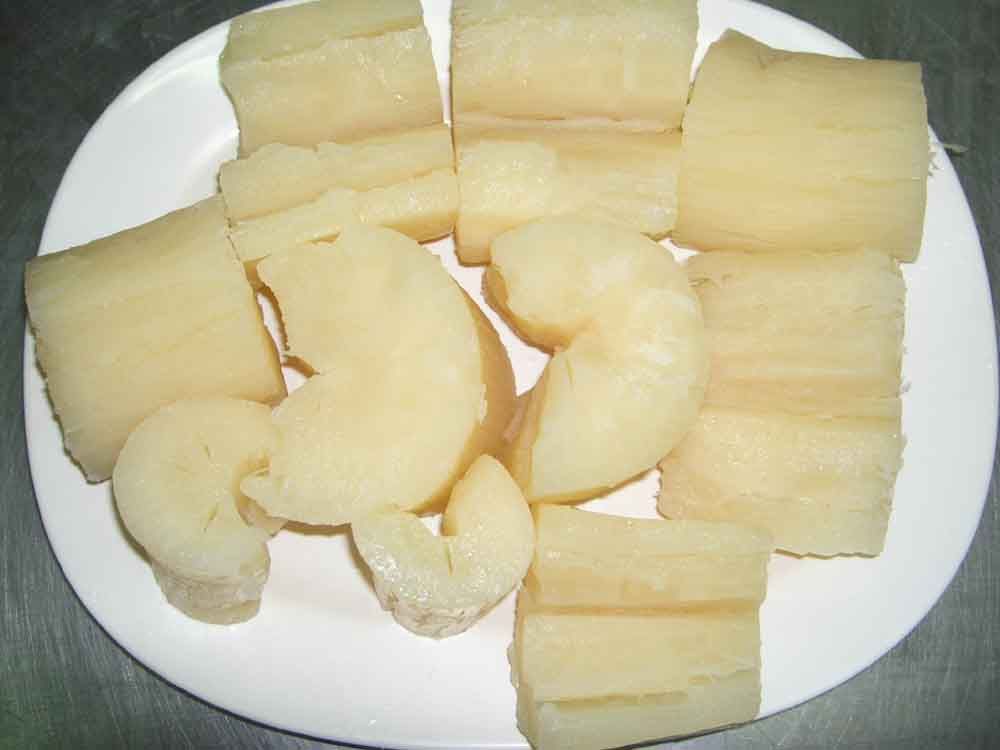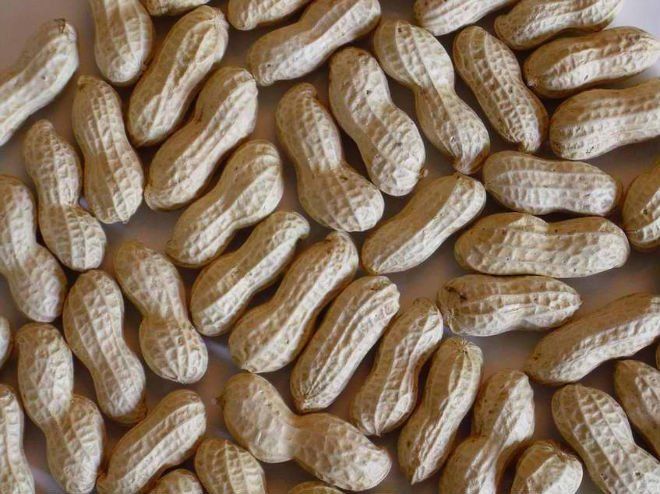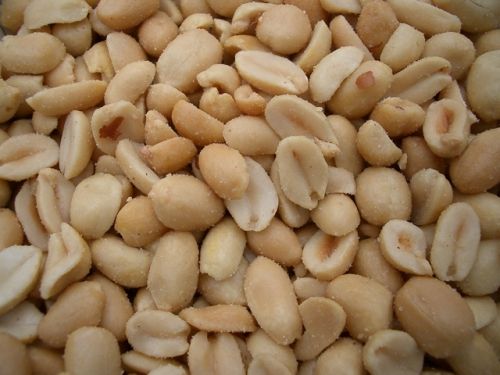African Staples
Gastronomers, budding chefs and food enthusiasts alike, are increasingly curious about African foods and their nutritional value. I recently employed an Au pair from Italy, who confessed she was too scared to try African food when she first moved in with us. A few weeks ago, she asked why there were no widely recognised African Restaurants like Italian, French, and Indian etc. When I asked why, she said, in the six months she had been with us, she had had some of the amazing dishes she had ever eaten. Coming from an Italian, I was flattered. She then asked for the nutritional values of African foods. In answer to this challenge (as I chose to see it), I came up with a list.
It is hard to find comprehensive names for half of what we eat but below is a list of some of the more common foods found in African countries. For the most part, the notion of African cuisine conjures images of greasy heavy foods with little nutritional value bar carbohydrates and fat. I hope this serves as a valuable guide for those interested in what African cuisine has to offer.
Most of the food produced in Africa is grown organically and complete meals often comprise a nutritious diet. The African diet is often centred on foods with high protein and fibre content.
PLANTAIN (Musa X paradisiaca)
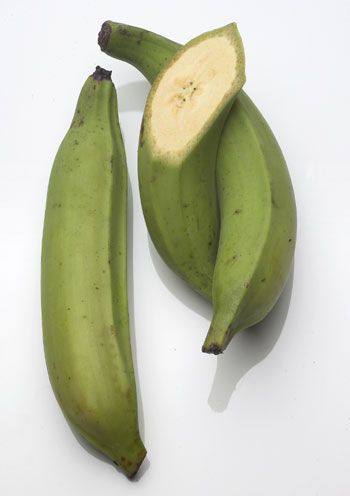
Plantain, a species of the banana family, is often eaten as an accompaniment to stews and vegetables, much like rice and pasta. The fruit which grows in bunches on suckers is a rich source of carbohydrates. However, contrary to popular belief, the starch in plantain is made up of complex carbohydrates which release energy slowly and are highly recommended for diabetics. They also provide a rich source of dietary fibre, potassium, magnesium and phosphates as well as vitamins A, C and B6 which help to build immunity against disease and infection.
Plantain and banana are often described as the same thing, only differentiated by ripeness, method of cooking and consumption. although of the same species, plantains are in fact completely different. They are darker in colour with a tougher texture, less sugar and greater alkaline content, whether green(unripe) or yellow(ripe). You certainly couldn't eat ripe plantain in the same way you would a banana.
CASSAVA or manioc (Manihot esculenta)

Cassava is the third largest source of carbohydrates in human food in the world and is used in many African dishes. Cassava is indigenous to South America and was introduced to Africa during it‘s colonisation. Cassava roots (tubers) are now used to prepare an amazing variety of foods across Africa in particular and the world in general.The carbohydrates in cassava constitute 30-35% of its content and provide a good source of energy. Cassava is low in Saturated Fat (less than 1%), Protein (1-2%), Cholesterol, and Sodium, but high in Vitamin C (25mg/100g), Manganese (40mg/100g) and Calcium (50mg/100g). Fresh cassava leaves are also a good source of protein (23 percent), vitamins, and minerals.
YAMS (Dioscorea rotundata/cayenensis)
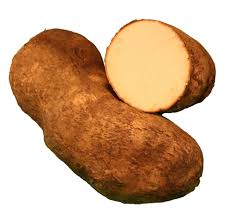
Yams are a staple tuber vegetable of West African origin. It is a more expensive option and many families will only indulge on special occasions. In some countries, it is considered a food of the gods and special festivals mark the beginning or end of the Yam harvest (Nigeria.) There are several varieties of yams and eaten in moderation, could help in maintaining a perfectly balanced diet. Yams are also thought to be the reason behind the high rate of multiple births in Nigeria, their biggest consumer. Nutritionally, yams are high in vitamin C, dietary fibre, Vitamin B6, Potassium, and manganese. They contain low volumes of saturated fat, sodium and cholesterol.
PEPPERS (Chilli)

Used mainly to add heat and flavour, chilli forms an important part of an African meal. All peppers are an excellent source of vitamin C, with the Scotch Bonnet being most popular for its fiery taste. Chillies have become the most frequently used condiment and worldwide, and are considered an important green vegetable in temperate zones. Green, yellow are red bell peppers are also commonly used providing a sweeter taste for savoury dishes and contain as much as two times the amount of vitamin C found in oranges. They contain no cholesterol or saturated fat. They are low in calories and sodium but high in fibre and capsicum and contain significant amounts of iron, niacin, thiamine, magnesium and riboflavin. Their thermogenic qualities ensure they are often recommended as an aid to weight loss.
RED PALM OIL
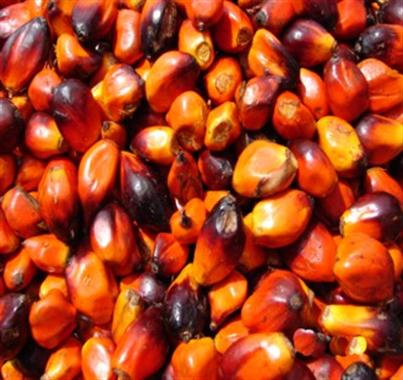
Red palm oil is extracted from the pulp/flesh of the palm fruit solely by cooking and pressing. Widely used in cooking, it is also used as an ingredient in several processes around the world. It is used in a variety of African dishes for its distinctive taste and to add colour. It is easily digested, absorbed and utilised in normal metabolic processes. It plays a useful role in meeting energy and essential fatty acid needs in the body. Red palm oil contains a greater number of nutrients than any other dietary oil and contains an assortment of vitamins important for good health. According to the American palm oil Council, the health benefits of palm oil include the following:Free of Cholesterol and Trans Unsaturated Fatty Acids - Palm oil, like other vegetable oils, is cholesterol free. Having a moderate level of saturation, it does not require hydrogenation for use as a fat component in foods and, as such, does not contain Trans fatty acids.
- A rich sources of beta-carotene, a precursor of Vitamin A, which some studies have found to have antioxidant properties and beneficial to eyes.
- Vitamin E Antioxidants - Palm oil and palm oil products are naturally occurring sources of the antioxidant vitamin E constituents (Some studies have suggested that antioxidants may play a protective role in cellular aging, atherosclerosis and cancer).
- Provides Linoleic Acid: An essential fatty Acid, palm oil triglycerides carry linoleic acid predominantly in the 2-position, which favours absorption and availability for use in the body)
- A balanced Fatty Acid Composition (mixture of polyunsaturated, monounsaturated and saturated fatty acids)
- A long Record of Safe Use - Palm oil has been a safe and nutritious source of edible oil for healthy humans for thousands of years.
- Excellent Dietary Energy Source - Like other common edible fats and oils, palm oil is easily digested, absorbed and utilised in normal metabolic processes and plays a useful role in meeting energy and essential fatty acid needs.
GROUNDNUTS (Peanut)
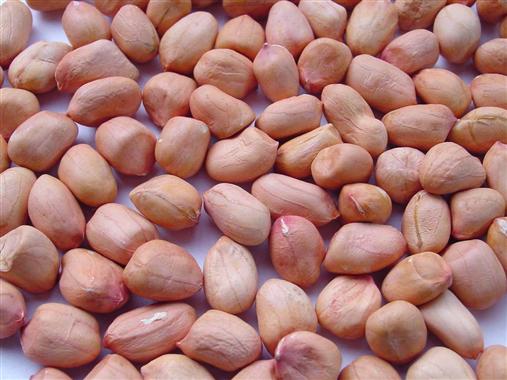
Groundnuts are one of Africa's favourite nuts and are used for a variety of snacks and sauces. They provide a very tasty a rich source of protein. Groundnuts have become very popular and are now eaten everywhere in the world.
MAIZE (corn)

Maize is a cereal grain most heavily featured in Ghanaian cuisine and a good source of vitamin B6. It provides an excellent source of potassium, phosphorus, magnesium and folate. Maize can provide substantial amounts of vitamin A and the germ is rich in vitamin E. Maize oil also contains high levels of polyunsaturated fatty acids and natural antioxidants. However, of the three major cereal grains wheat, maize, and rice, maize has the lowest concentration of protein, calcium, and nia
